Over a thousand families homeless as waters of the Ganges engulf villages in Malda
Since September this year, erosion on the banks of the Ganga River in West Bengal’s Malda district has wiped away large parcels of land and displaced over a thousand families who are sheltering in school buildings, or are living under tarpaulin sheets. Experts stress on the need to have a rehabilitation policy for environmental refugees.

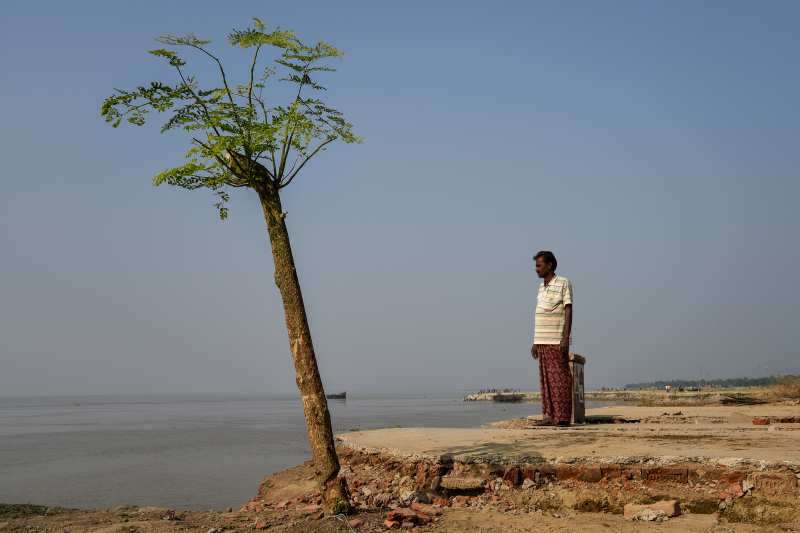
Hari Ghosh, an erosion victim of Durgaramtala. His family, currently living at local school, lost three bighas of land and house due to river erosion. Photo by: Tanmoy Bhaduri
Malda, West Bengal
Baidyanath Mondol slowly made his way to the banks of the Ganges, just to look at his home that now stands marooned in the middle of the river. The frail 70-year-old from Malda, West Bengal, said he came to Sarkartala, where his village once stood, every single day, ever since September 12 this year, when the river bank collapsed and the waters flooded his house and washed everything away.
Baidyanath now lives with his daughter at Baishnabnagar village, five kilometres away.
More than a thousand families in Malda district faced the same fate as Baidyanath and have lost both their homes and all their belongings. “We did not even have the time to shift our belongings to a safer place,” Hari Ghosh, an inhabitant of Durga Ramtala, on the river banks, told Gaon Connection.
“We have never seen such devastation before. The erosion and flooding began at about six in the morning [of September 12] and by the evening over 350 families were displaced,” 52-year-old Hari, who is now living at a local school, added. He said he had lost three bighas of land to the land erosion.
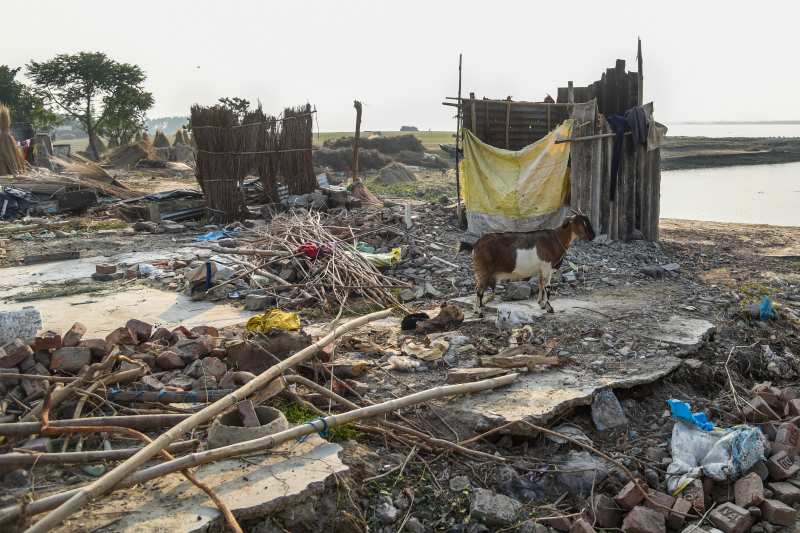
“Since September, large parts of Sarkartala, Mukundatala, Ghoshtala, Chinabazar, Bhimagram and Lalutala villages under Birnagar 1 gram panchayat of Kaliachak 3 block have been washed away,” Hari said.
As many as 350 buildings including schools, temples, mosques and homes were swallowed up in no time by the advancing Ganga river. Local people fear there will be little left of their villages.
“It looks like the entire Birnagar will disappear in the next few months,” feared Sumanta Mondal from Mukundatala. The 34-year-old is living with his family at a temporary shelter in a local school ground along with 120 other families. “We are sleeping under the open sky,” Sumanta added. According to the 2011 Census, 54,830 people inhabit Birnagar grampanchayat 1 & 2.
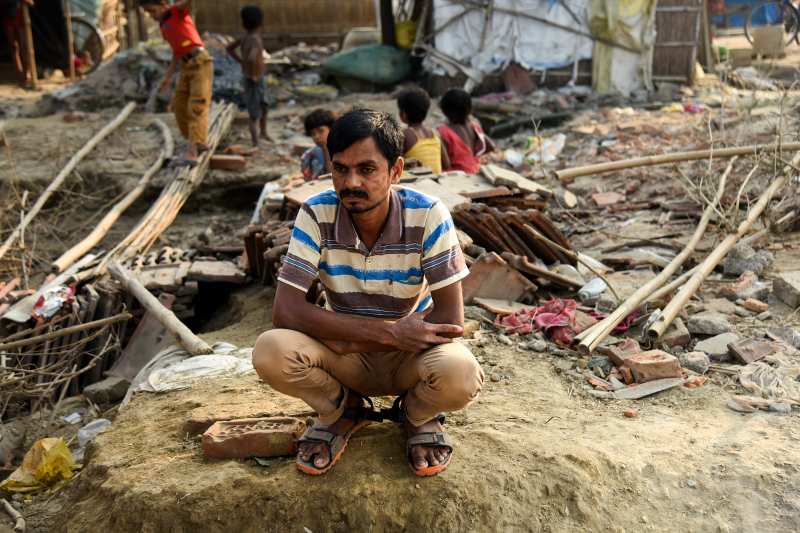
Barrage of woes
Many of the flood victims at Birnagar 1 gram panchayat hold the Farakka Barrage Project responsible for their misery.
Farakka Barrage is located in Murshidabad and Malda districts of West Bengal, about 300 km north of Kolkata, the state capital. It is one of the largest barrages of its kind in the country having a feeder canal for a flow of 40,000 cusec and whose bed width is wider than that of Suez Canal.
Also Read: Surging waters of Chambal River devour thousands of hectares of ripe crops every year
The main objective of the Farakka Barrage Project complex is to divert an adequate quantity of Ganga waters to the Bhagirathi-Hooghly river system through a 38.38 km long feeder canal for preservation and maintenance of Kolkata Port by improving the regime and navigability of the Bhagirathi-Hoogly river system. The increased upland supply from Ganga at Farakka into Bhagirathi reduces salinity and ensures sweet water supply to Kolkata and surrounding areas.
According to the inhabitants of Chinabazar in Birnagar panchayat, the flooding has time and again affected over one million people of Malda and Murshidabad districts, directly or indirectly. And they blame the Farakka Barrage for their woes.

“We heard that a number of lock gates of the barrage were opened due to heavy rains in North Bengal and Sikkim, but once local villagers agitated, they closed these gates and the water level receded,” Bhaskar Mondal, a local social worker, told Gaon Connection.
Residents of Chinabazar and Lalutala lost their houses and lands this year in October. Over 80 houses and the local Jama Masjid in Chinabazar, which was over 100 years old, were washed away. The homeless have shifted to a madrasa and three government schools nearby and few families are living outdoors with nothing more than polythene sheets providing them shelter.
“The affected villages fall six to seven kms along the upstream of the Farakka Barrage, and river bank erosion in the upstream region happened due to back pressure of water,” Kolkata-based Sugata Hazra, professor and former director of School of Oceanographic Studies, Jadavpur University, told Gaon Connection.
“But the incidents of such erosion increased after construction of the barrage in the 1970s. Moreover, water storage capacity of the barrage has reduced in recent times,” he pointed out.

Politicising the crisis
The current situation has triggered a political tug-of-war between the ruling Trinamool Congress (TMC) and the opposition party in the state, Bharatiya Janata Party (BJP).
Sabina Yeasmin, state irrigation and waterway minister of state, alleged that 12.5 km upstream and 6.9 km downstream of the barrage fall under central government jurisdiction and the state government has apprised the centre of the problem.
Also Read: The disappearing Puducherry beach comes back to life. An artificial reef came to its rescue
“We sat with the central government on multiple events and discussed the erosion issue with them. The barrage authority assured us about mitigation measures but the work has been very substandard and as result our embankments reconstruction works have also been affected due to them,” Yeasmin told Gaon Connection.
“Since 2016, barrage authorities have been placing sandbags to stop further erosion and they reconstructed the eroded river bank in 2018 at a cost of nine crore twenty one lakh rupees. They assured us that we would be safe from further erosion, but their work could not save the riverbank,” Swadhin Sarkar, a former member of legislative assembly and BJP leader, told Gaon Connection.
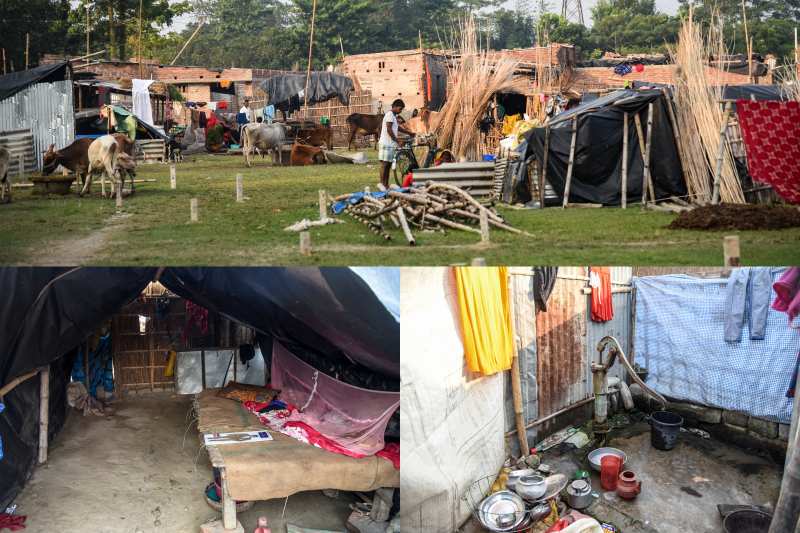
Sarkar is also an erosion victim and asserted that it was unusual to believe that water flowed upstream after opening lock gates but it happened for three days in mid-September when maximum erosion took place.
“The erosion began in 2016 and the river bank has given way, and this year alone it has breached at least thirteen times, two kilometres at Birnagar 1 gram panchayat,” Sarkar added. He complained that none of the recent erosion victims had received proper rehabilitation help and that instead of politicising the matter, the TMC should play a proactive role in helping the distressed villagers.
Also Read: In spate for four months, the Saryu river has affected 88 villages in Barabanki, Uttar Pradesh
Looking for another home
“We are aware of the situation and are looking for alternative accommodation for the erosion victims,” Mamun Aktar, block development officer, Kaliachak 3, informed Gaon Connection, but declined to share any other information.
But, a local source, who did not want to be named, said that the local administration had identified land – 600 metres away from the river bank – and planned to distribute the land among 127 families. But, things are stalled because that area has also been marked as a red zone by the Farakka Barrage authority, which means the area might be swallowed up by the Ganga anytime.
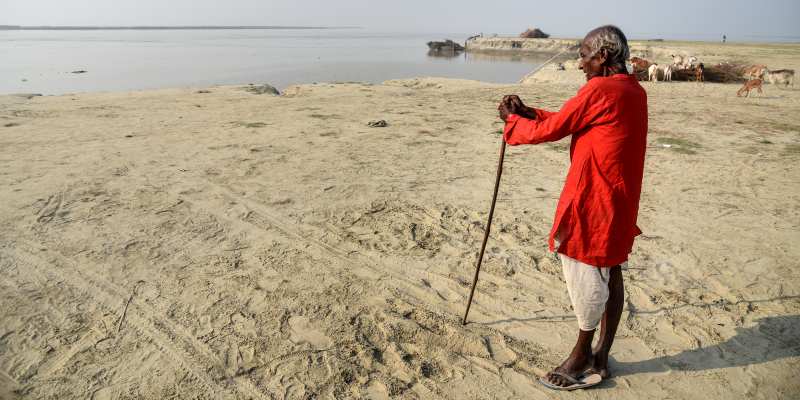
Meanwhile, 65-year-old Dharani Ghosh from Mukundatala village, which is just a pile of sticks and stones and broken walls, now lives in the open, at a school ground in Chamagram. “My rice husk, house and ten bighas of paddy field were washed away in front of my eyes, in a matter of minutes. We couldn’t do anything except take our cow with us when we fled,” she told Gaon Connection.
Gayatri Ghosh from Durgaramtala, has taken shelter at a school in Birnagar, too. The 34-year-old, along with her husband and four children, has been living there since September. “We were provided ten kilograms of rice, two kilograms of chira (flattened rice), two steel plates and bowls as a one time relief. We have no idea what we should do next or who we should approach for help,” Gayatri told Gaon Connection.
Also Read: Who moved my village?
“We are surviving on loans, but lenders are reluctant to give loans to us as we have no land to mortgage,” the 34-year-old said. Gayatri’s husband, a migrant worker, returned from Kerala in September soon after the disaster and hasn’t returned since.
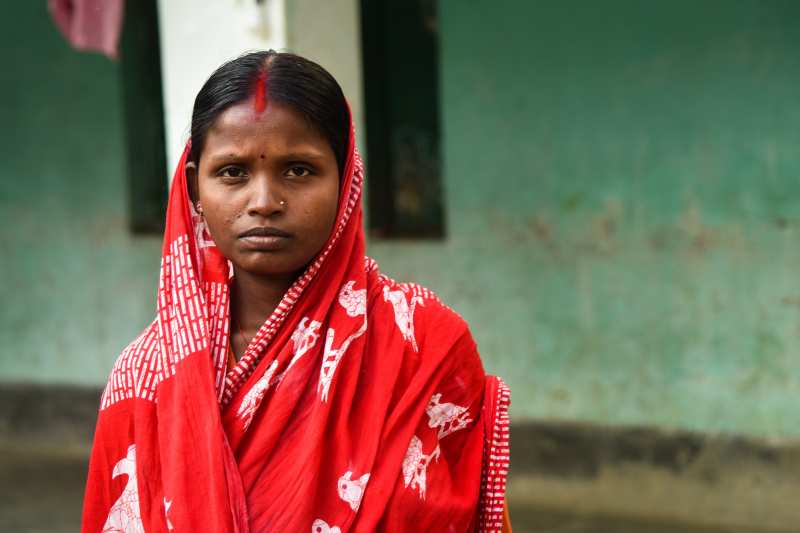
However, Chandana Sarkar, local MLA of Baishabnagar constituency, claimed that she had spoken to the chief minister in the state about the situation. “All the affected families are provided with necessary relief materials and we are trying to rehabilitate them soon,” she told Gaon Connection.
Schools, turned into shelter homes, cannot resume classes
More problems arose when government schools began physical classes for students of standard nine to eleven on November 16. The Chamagram High School in Birnagar has not been able to open its classrooms to students as nearly 500 homeless families are still living there.
“The school has sixteen classrooms where over hundred and twenty families have been living since September. All classrooms and corridors are occupied except the headmaster’s room,” Shaktipada Sarkar, headmaster of Chamagram High School, told Gaon Connection.
“While we have been asked to run the school, we do not have a specific direction on how to operate in this situation. We have already taken up the matter with the block administration and are waiting for their intervention,” he added.
Renuka Roy, who shares a classroom with a few other families at the Chamagram High School, said that the school authority had cut off the power connection after the homeless families refused to leave the school. “We lost everything in the river, where do we go now? We have neither land to graze our cows, nor space to even defecate,” the 70-year-old complained.
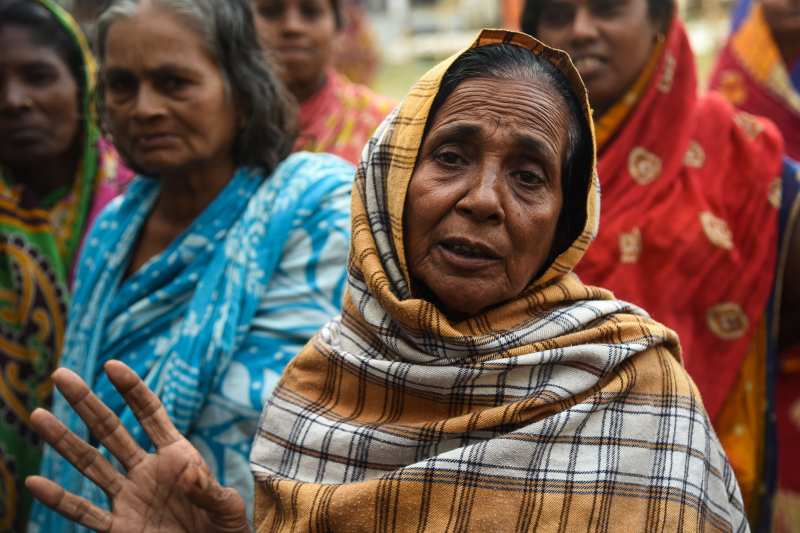
In response to this matter, Nishikanta Roy, the husband of the local panchayat pradhan, Birnagar 1, said, “The school authority received an electricity bill of nearly seventy thousand rupees for three months. There was no other option other than disconnecting the line. Now these families have resumed their power connection on their own,” he added.
A social worker Chamagram, who arranged relief for the homeless families in the past three months, said that the residents were now desperate to find safer places but the price of lands in the region has increased drastically. “On one hand, they have nowhere to go. On the other hand, the situation has taken away the right of over 600 school students to attend their classes,” Bhaskar Mondal said.
No policy for environmental refugees
There is no central and state level policy yet to rehabilitate these erosion victims. In an administrative review meeting of Malda district on December 8, Mamata Banerjee, chief minister of West Bengal, said in a public meeting that the central government should rehabilitate Ganga river bank erosion victims under the Namami Ganga project.
“Immediate implementation of riverbank protection measures with appropriate technology and rehabilitation plan for environmentally displaced people or resettlement policy for these communities can solve the issue. But the state doesn’t have any resettlement policy for environmentally displaced people,” Sugata Hazra of Jadavpur University said.
He went on to elaborate that West Bengal was worst affected by sea level rise and river bank erosion, and there should be a state specific rehabilitation plan for sea level rise or river bank erosion victims.
“The state has rehabilitated a few displaced people in Sunderbans and Malda-Murshidabad in the past but they did not receive any rehabilitation package as there is no state level policy. As Farakka Barrage is a developmental project, the victims should also get rehabilitation packages under project-affected displaced communities,” the professor pointed out.
According to him, it was of utmost importance and urgency that the state government should have a rehabilitation plan for the victims. “The government should also negotiate with the National Disaster Management Authority to demand a fair share from its funds or seek World Bank assistance to address such a large-scale displacement,” said Sugata Hazra.
Farakka Barrage authorities did not respond to emails sent to them seeking their views on the issue.

